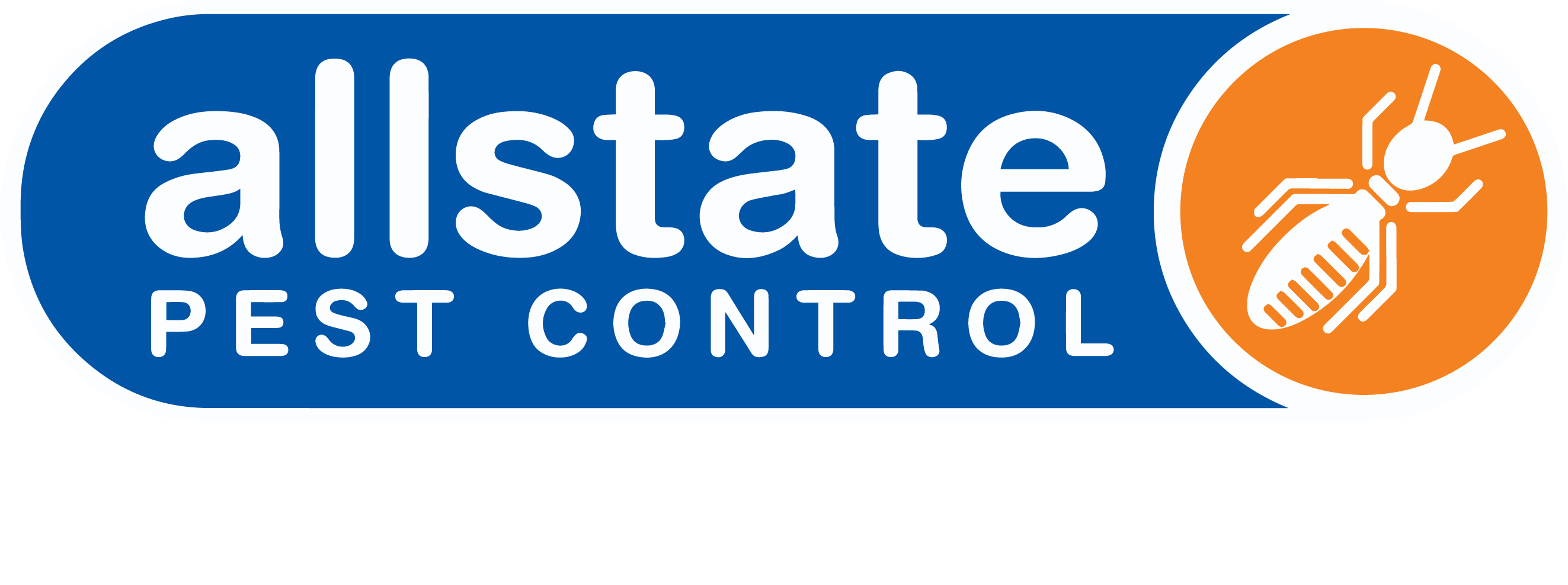WHAT NOT TO DO DURING A BEE SWARM
What questions will this article answer?
What is a bee swarm?
A significant number of bees leaving an overcrowded hive to start a new colony elsewhere is known as a bee swarm.
Are bee swarms dangerous?
Swarming bees are thought to be quite docile with no hive to defend, but they will become aggressive if they perceive a threat.
Warning signs of a bee swarm
You may notice a large number of bees making noisy buzzing sounds around your home.
What not to do during a bee swarm
Avoid panicking, sudden movements, moving the swarm on yourself, remaining outdoors and going barefoot.
How to prevent a bee swarm in your yard
Remove food and water sources, choose your flowering plants carefully, grow bee deterring plant and install ultrasonic deterrents.
Professional bee management
While we advocate for hive relocation to manage bee outbreaks, we can inititate treatment if there is a severe outbreak or health risk.
For safe and humane bee control, choose Allstate
Available 24/7, we’re fully equipped with protective clothing and bee handling equipment to provide long-term bee prevention solutions.
What is a bee swarm?
With limited space to raise their young and store honey, worker bees spend around a month preparing for a swarm. The aim of the swarm is to support the current colony and allow it to continue growing.
There are 3 types of bee swarms: primary and secondary swarms, as well as absconding.
During a swarm, a significant number of bees say farewell to their hive to start a fresh colony elsewhere. In primary swarms, the resident Queen bee is escorted to a new hive with around half of the colony. A smaller secondary swarm may follow later, where one more new Queen bee will exit. If the entire colony leaves due to extreme circumstances such as disease, this is known as absconding.
Once a swarm departs the hive, it will travel to a spot that is determined to be safe and suitable as a home by scout bees. Worker bees will then begin the important job of building a brand new hive.
Are bee swarms dangerous?
While it’s natural to assume that bees will sting you if you get too close, bee swarmers just want to move into their new home as quickly as possible. Long story short: if you don’t disturb them, it’s unlikely that they’ll sting!
However, this is often easier said than done. A swarm of bees can trigger anxiety in many people, and combined with a lack of understanding about bee behaviour, our panicked reactions can agitate bees. This can be particularly concerning when children and pets are in the area, as bee stings are painful and can even trigger allergies.
If you’re seeing more bees around than usual, keep well away from them, stay indoors and reach out to Allstate for advice as soon as possible.
Avoid getting stung by a bee swarm, speak to an expert today
 or
or
Warning signs of a bee swarm
The most obvious way to tell if you’re about to experience a bee swarm is that you notice more bees around your home. You may even hear their distracting buzzing noises before you see them.
You’ll most likely see them buzzing between flowering plants in your garden and lingering around certain parts of your building to build their new hive. Pay attention to potential entry points inside your roof and walls as these are popular nesting sites.
If there are established beehives nearby, there is always a risk that a swarm could approach your property, so be on the look out.
What not to do during a bee swarm
Do not panic
While it’s completely understandable that your first reaction to experiencing a bee swarm is to feel anxious, we strongly recommend not acting on this. Stay calm if possible.
Do not try to move the swarm yourself
Hosing bees with water or sprinklers, swatting and throwing stones will not deter a swarm away from your yard. Instead, bees will become aggressive and sting if they believe that they are in danger, particularly if they are trying to protect their Queen.
Do not create sudden movement
This can be perceived as a threat and aggravate the swarm.
Do not go outdoors
Move your children and pets indoors until the swarm has moved away from your yard, or clustered a safe distance away. This may take up to 30 minutes.
Do not go barefoot
To protect yourself from the sting of fallen bees, wear appropriate footwear.
If you have a bee swarm, it can be hard to figure out what to do when you’re feeling stressed. The best action that you can take is to contact Allstate straight away for professional advice and calm reassurance.
Need expert bee advice? Call us today
 or
or
How to prevent a bee swarm in your yard
Remove food and water sources
Bees mainly feed on nectar and pollen, but some species will eat meat, dairy products, fungi and flower-based oils. So keep food items covered where possible, including pet water bowls.
Choose your flowering plants carefully
Bees are attracted to bright coloured blue, purple and violet flowers with a pleasant sweet scent, so having less of these around will make your garden far less appealing. They are unable to see red flowers, such as tulips, making them a better choice.
Bee deterring plants
Some plants emit an unpleasant smell for bees and can assist in keeping them away from your garden. These include mint, eucalyptus, basil, geranium, lemongrass, neem, marigold and citronella.
Ultrasonic deterrents
You can consider purchasing electronic devices which emit sound waves outside the spectrum of human hearing. Bee antennae are sensitive to these ultrasonic sound waves, which cause confusion.
Keep safe from bee swarms, speak to our expert team
 or
or
Professional bee management
Above all, our handlers refrain from causing harm to the bees and prefer to safely relocate the hive to an appropriate location where possible.
If there is a severe outbreak or a significant health risk to you or your family, we will initiate treatment by applying an insecticide control dust.
For safe and humane bee control, choose Allstate
Since 1986, we’ve provided reliable and effective pest control services to residential, commercial and industrial clients. Available 24/7 to all suburbs of Adelaide for urgent advice, our highly trained and fully equipped technicians can recognise and safely manage bee swarms with minimal impact on the bee population.
With payment plans available on all our services, you can have fast, yet long-lasting solutions to all bee swarms that settle on your property.


